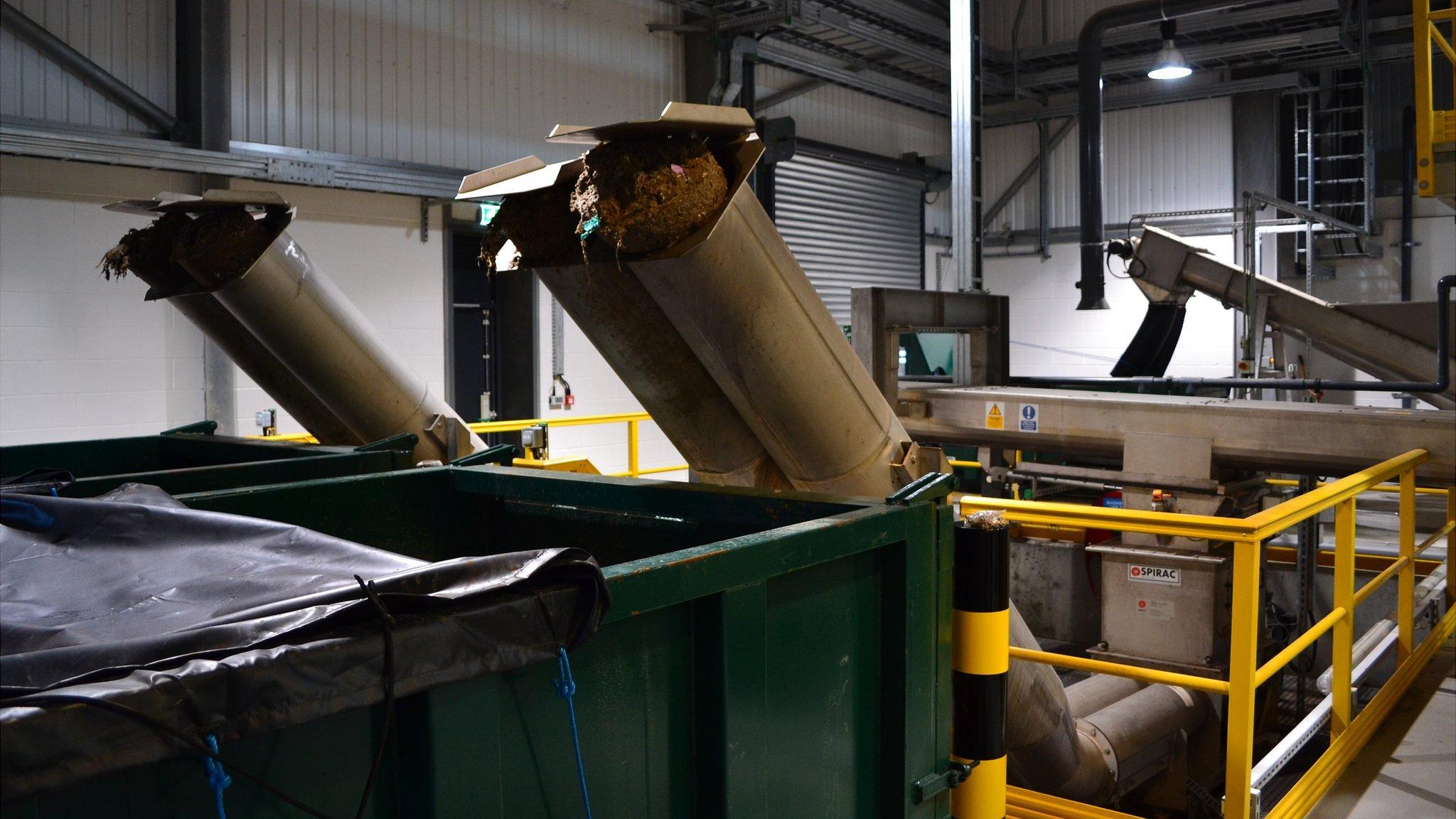Guernsey 10-year sewage project completed
- Published

The final phase of the project was replacing the short and long sea outfall pipes
A 10-year project to improve Guernsey's wastewater disposal system has been hailed a success.
The £35m project involved five phases including marine surveys, upgrades to the main pumping station, a preliminary treatment works and a storm tank.
The last phase was replacing the short and long sea outfall pipes, which at more than 45 and 100 years old were in a "very poor state of repair".
The pipes will discharge sewage and rainwater off the island's east coast.


The £35m project involved:
Marine surveys
New auxiliary pumping station for the short and long sea outfalls
Upgrading the main pumping station
Installing preliminary wastewater treatment
A 4,000 cubic metre storm tank
Replacing the long and short sea outfall pipes

Campaigners, including Surfers Against Sewage, have called for full sewage treatment to be introduced in the island.
A spokesman for Guernsey Water said the "unique tidal range and movement" off the east coast had a "high capacity for dilution, which allows the natural breakdown of biodegradable sewage" and therefore full treatment was unnecessary.
Mark Walker, capital delivery manager, said: "Our solution is based on sound science, and at a time when our island's resources are stretched it will protect our environment whilst ensuring best value for our customers."
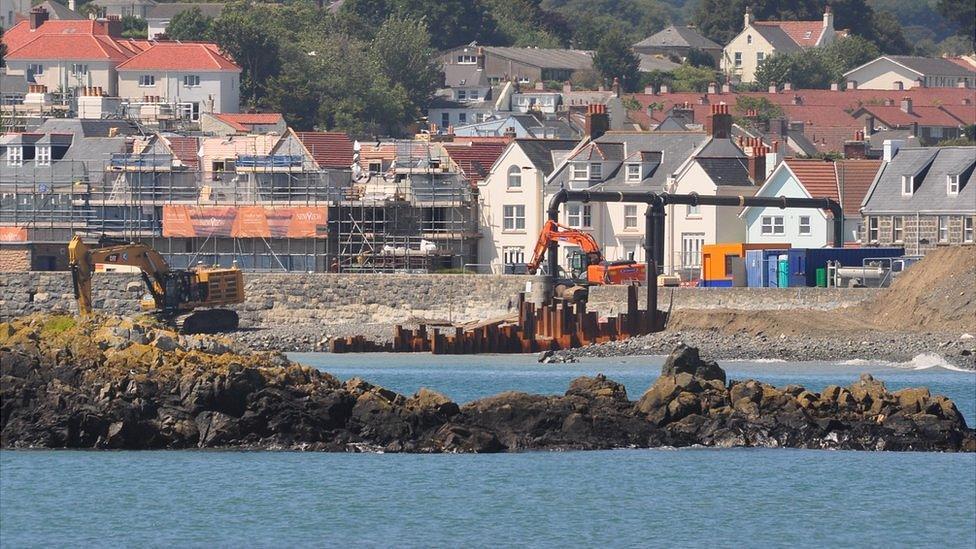
A wastewater pipe was built over the coast road while the new pipes were connected
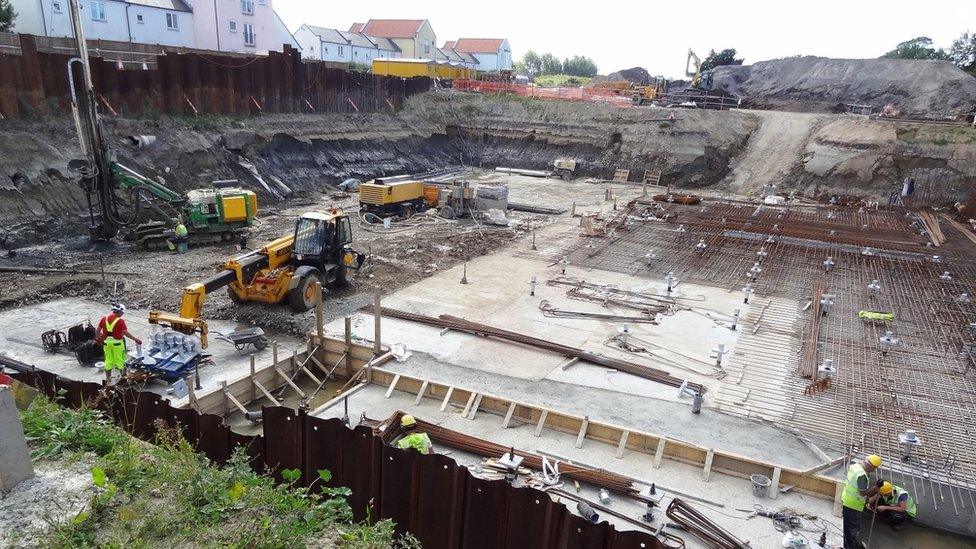
Work on the 4,000 cubic metre storm tank was completed in 2013
Public Services Minister Scott Ogier said: "The island's disposal of wastewater is now much cleaner and complies with the main principles of EU and UK directives to protect the beaches and marine environment in a cost-effective and sustainable way.
"The old storm outfall pipes have now been taken away and the beach returned to how it was before.
"The majority of the work is now buried underground and the above-ground building is much smaller, so people will not actually see the full extent of this investment, but that's the success of the project.
"The island now has a robust and safe wastewater infrastructure that will serve generations to come, and Guernsey Water will now be concentrating on flooding prevention across the island."
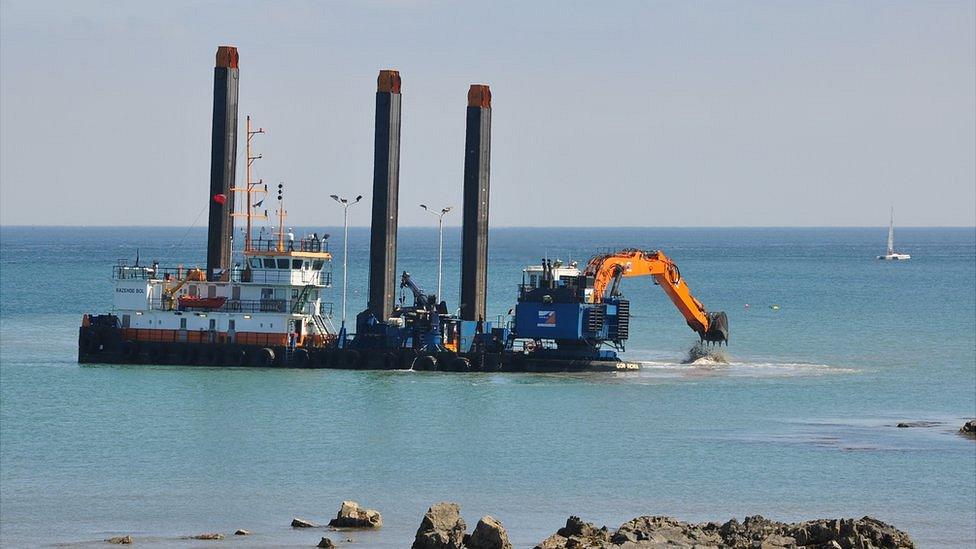
The offshore work involved floating platforms to dig out the channels for the pipes
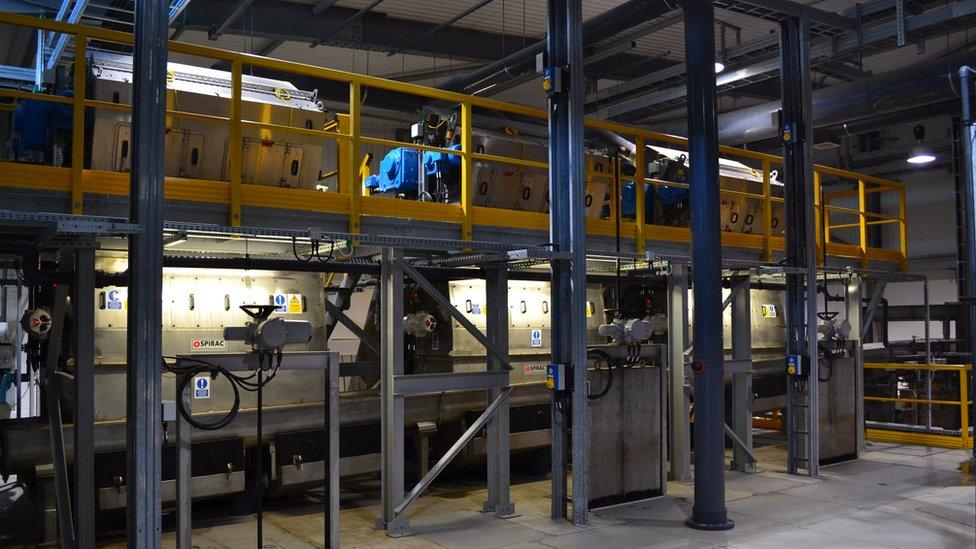
A partial treatment plant started operation in 2013 and removes non-biodegradable material from sewage
- Published8 July 2015
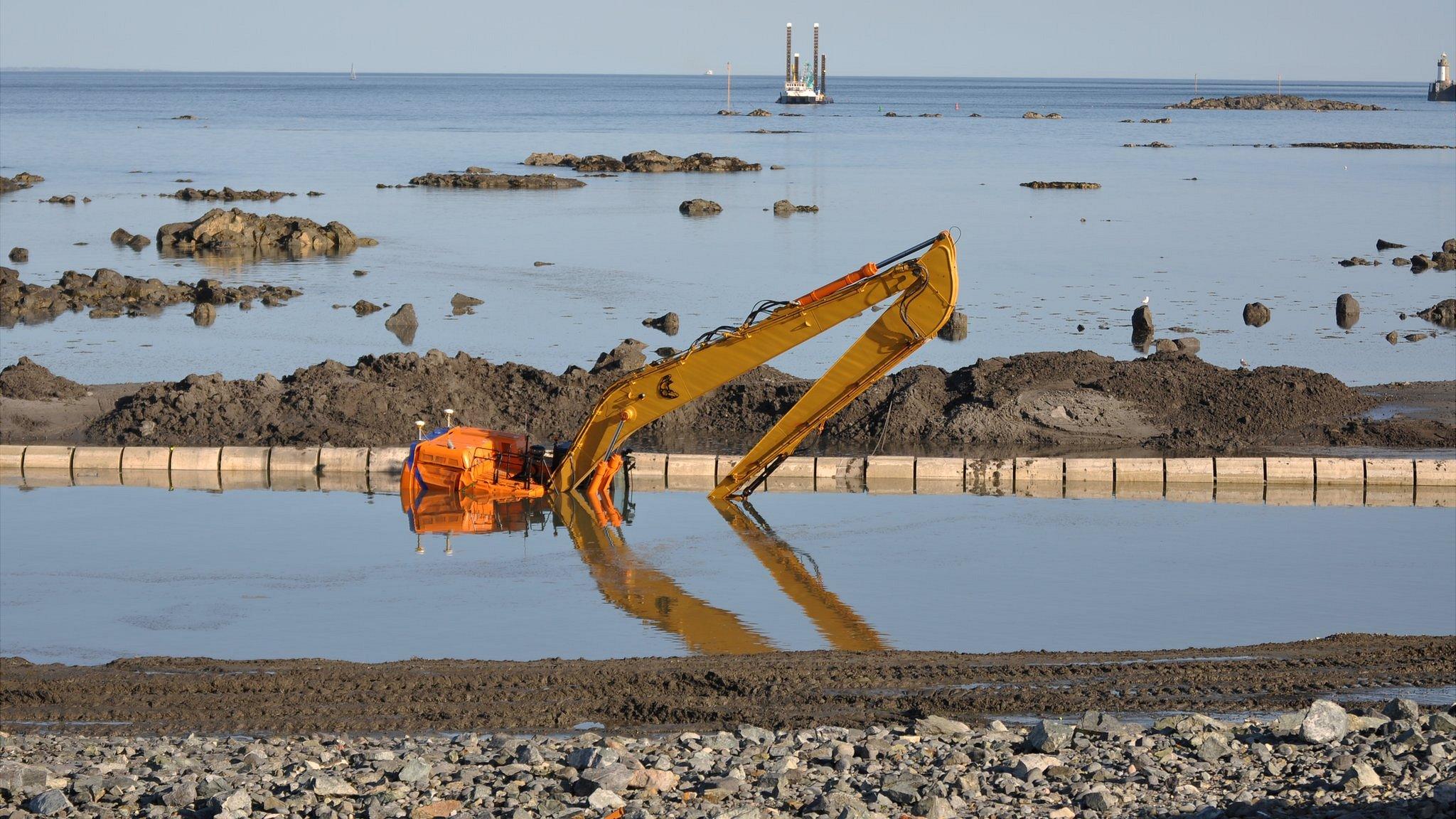
- Published6 July 2015
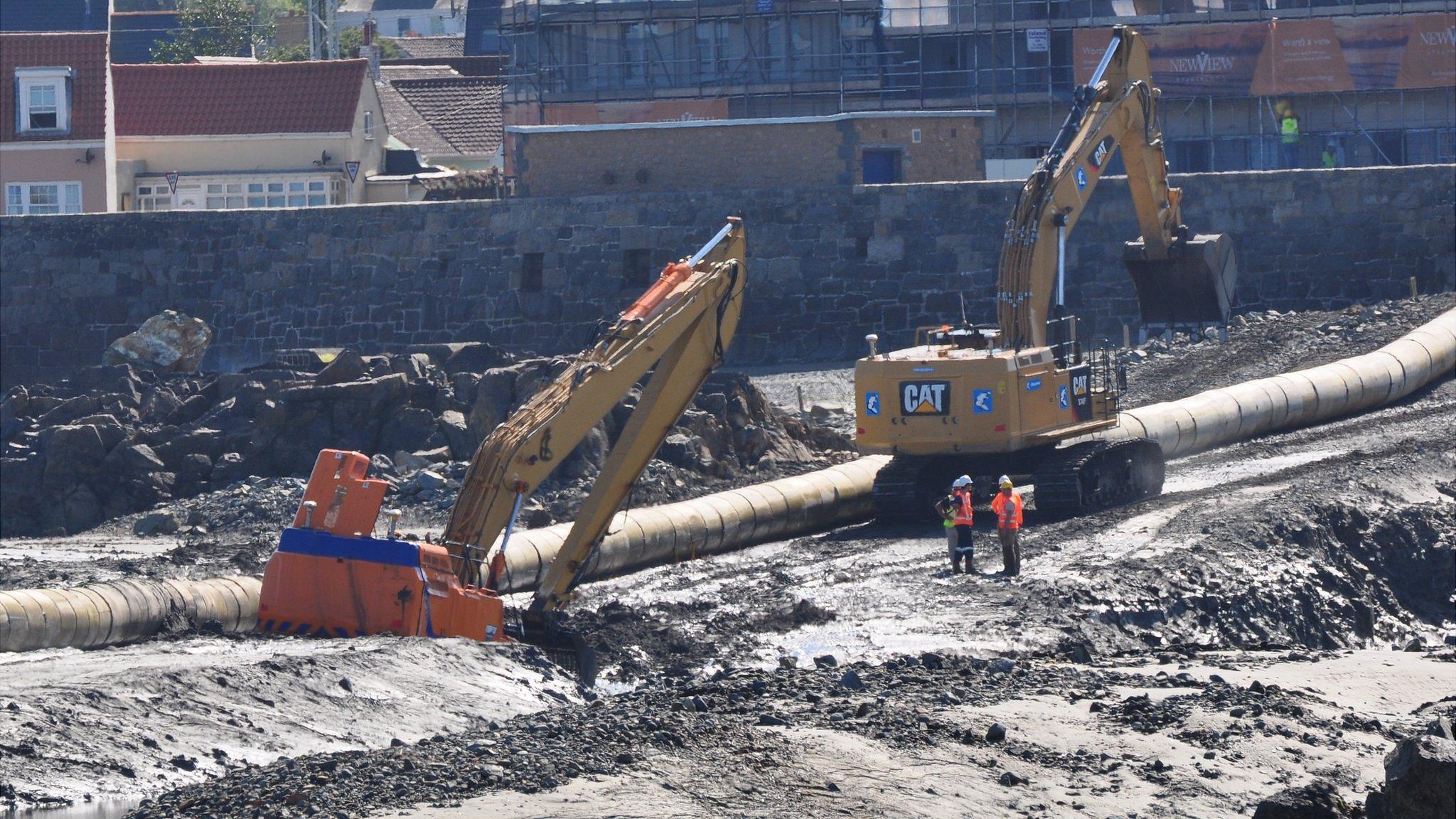
- Published26 June 2015

- Published15 June 2015
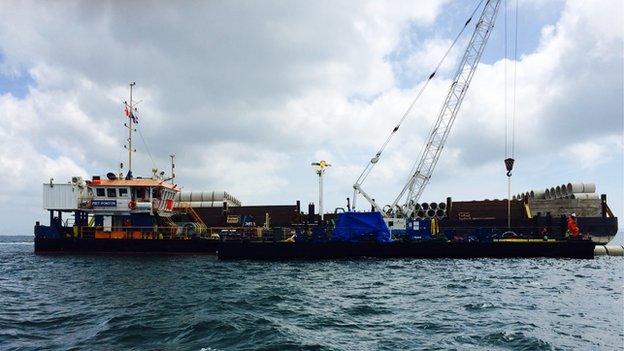
- Published29 January 2015
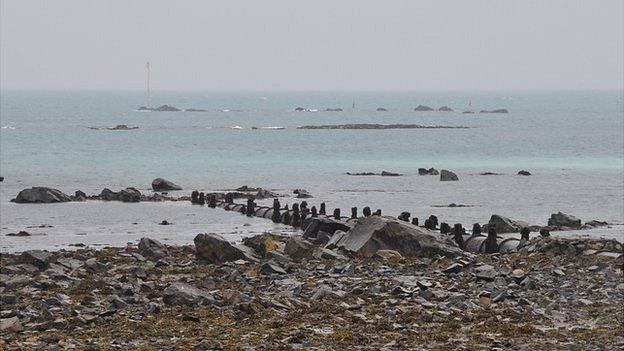
- Published18 September 2013

- Published9 September 2013
